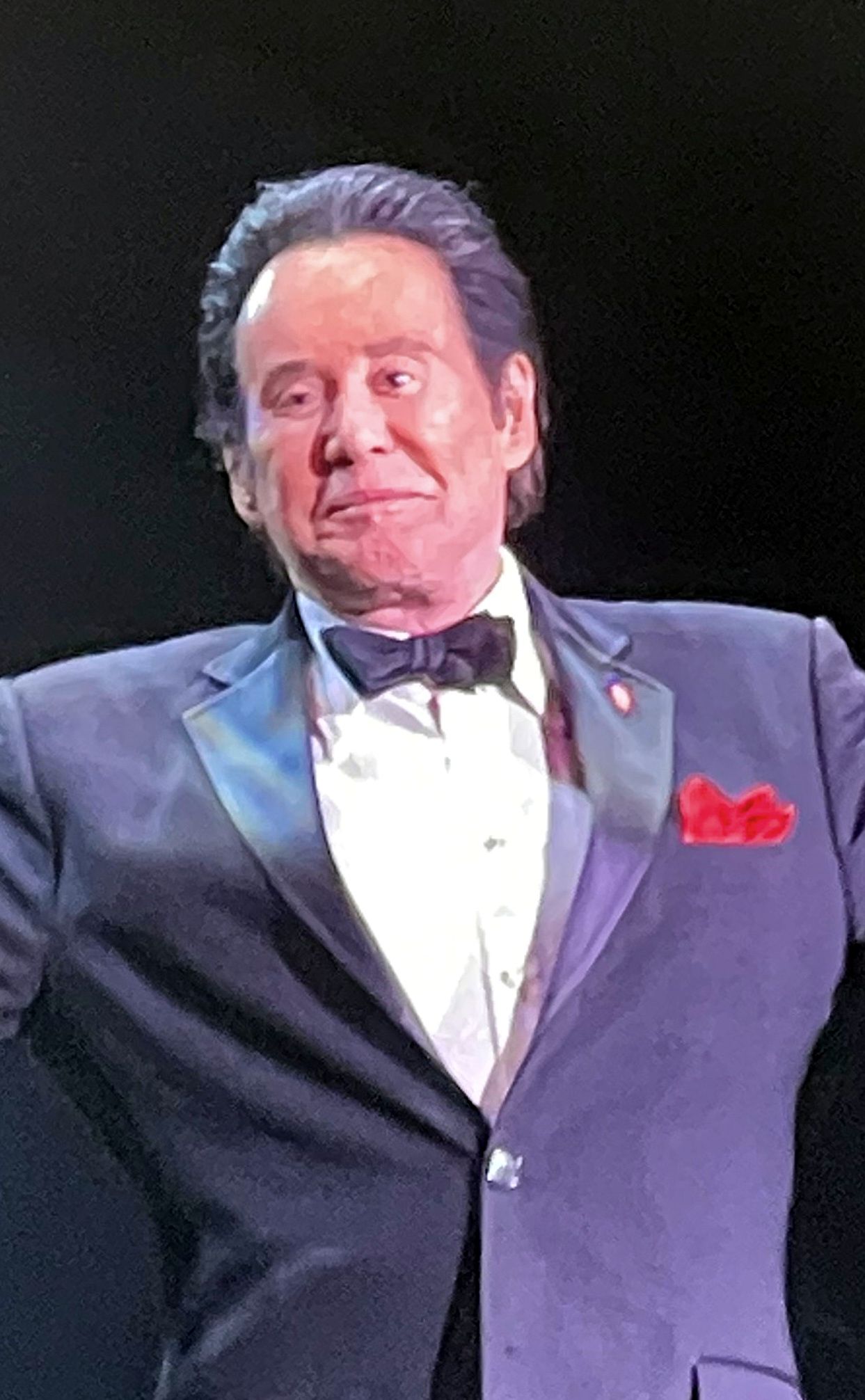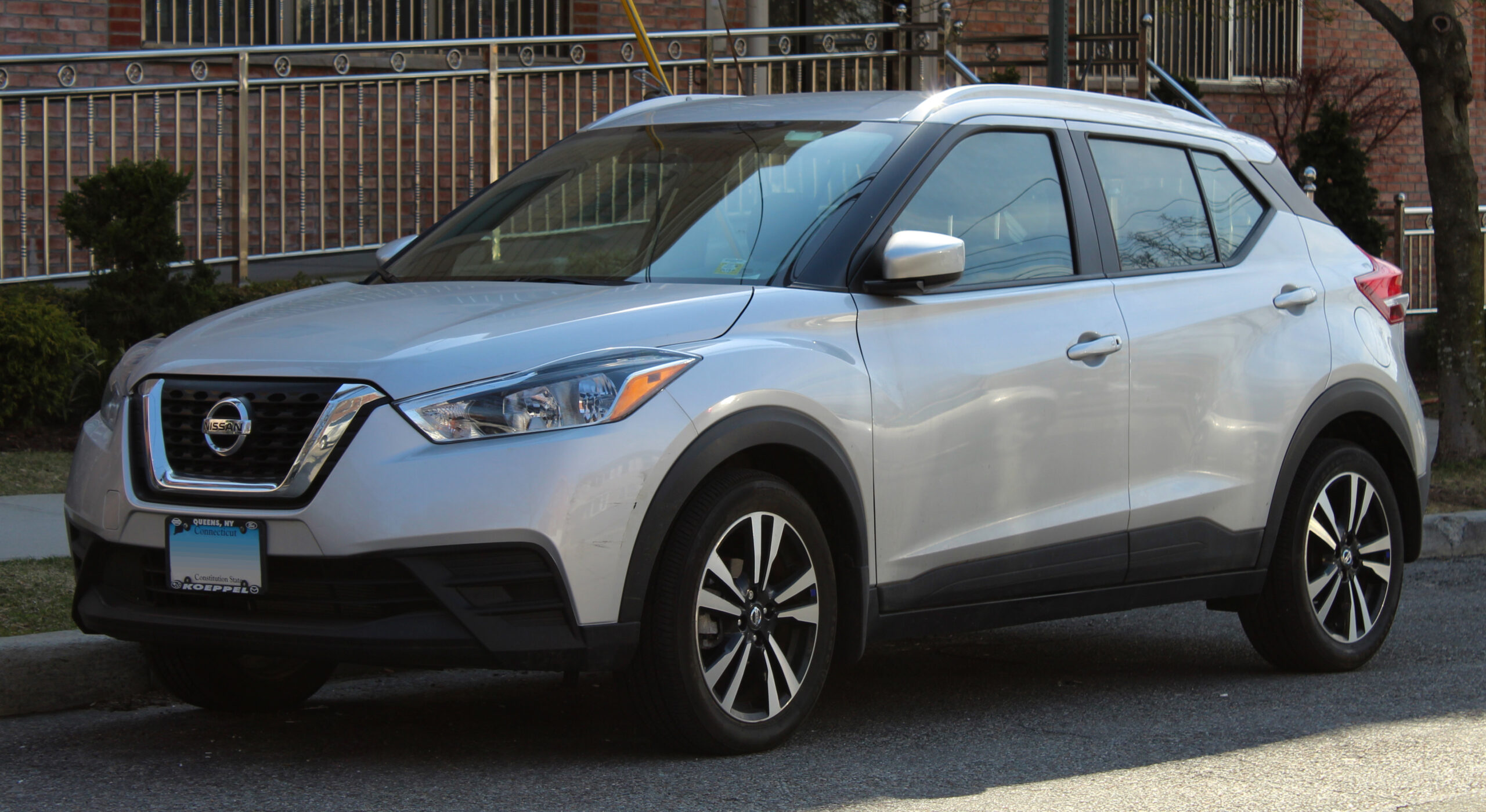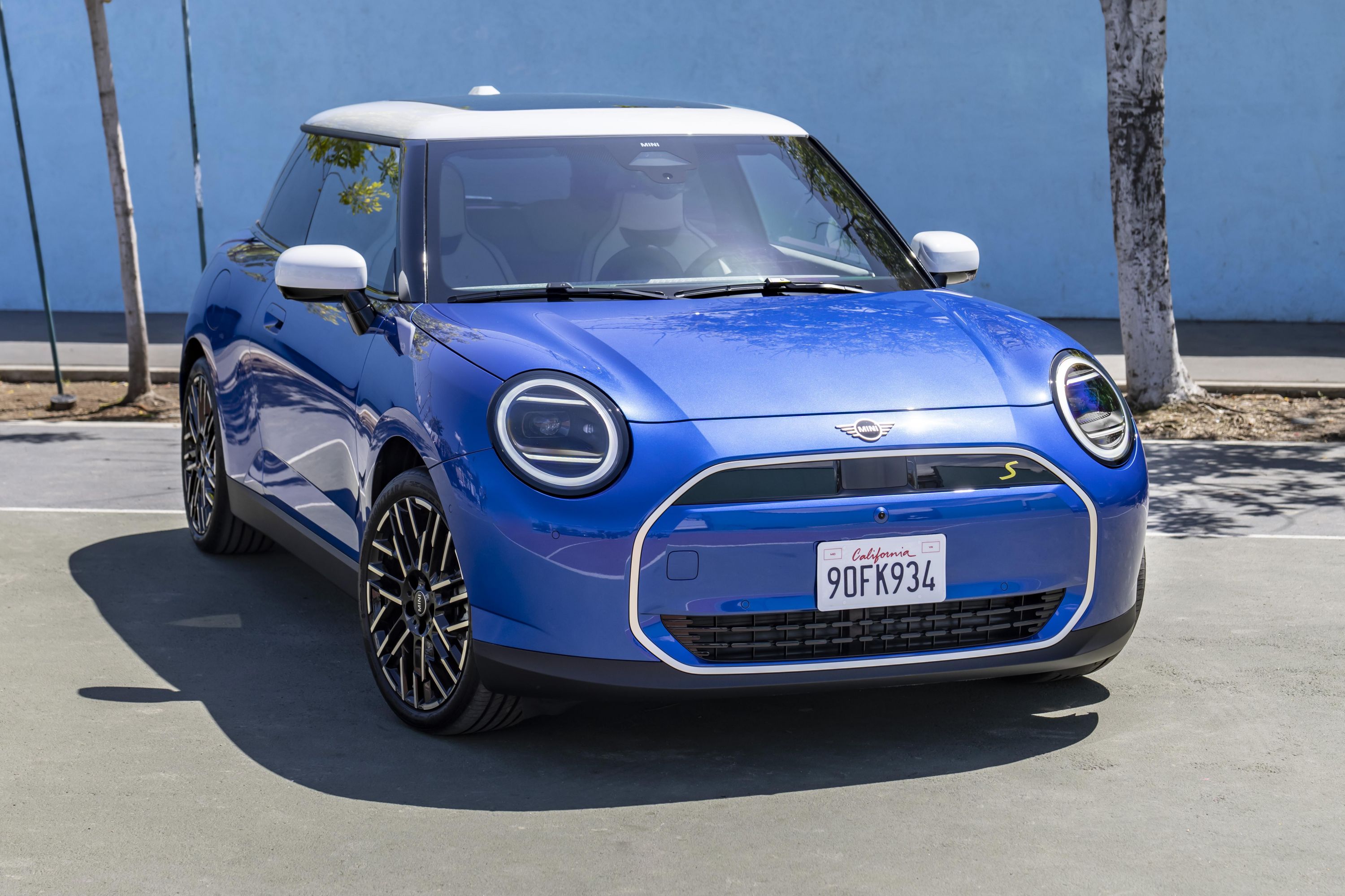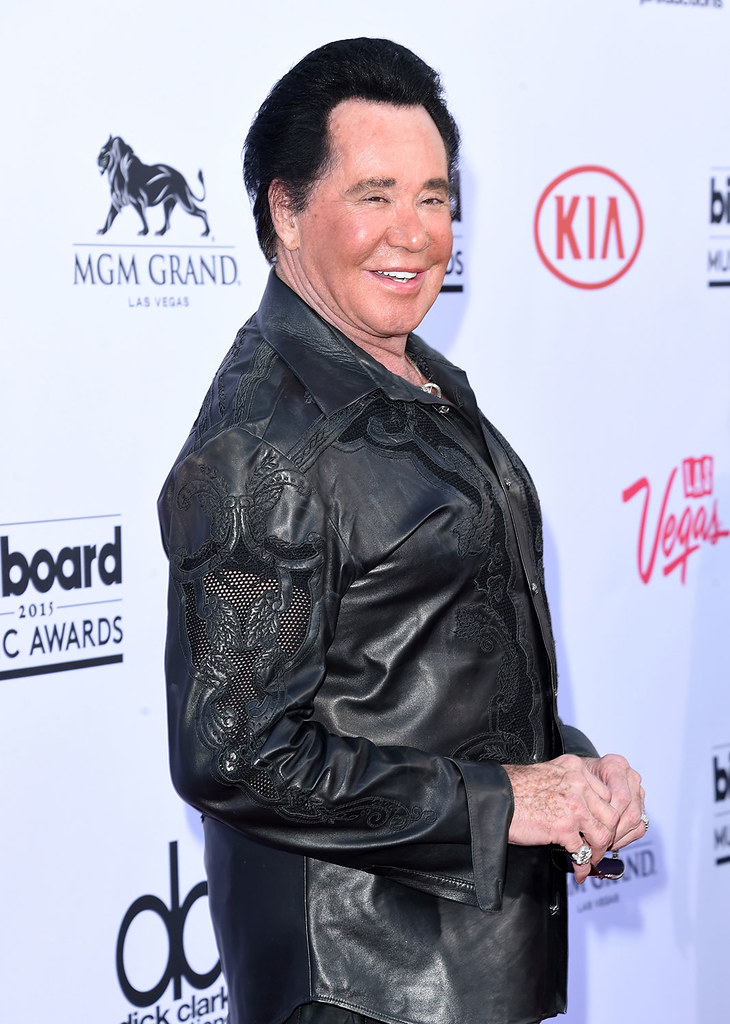
In the glittering tapestry of Las Vegas, few names resonate with the enduring legacy and opulent charm quite like Wayne Newton. Affectionately known as “Mr. Las Vegas,” his career, spanning an astounding 30,000 shows since his debut in 1958, has cemented his status as an entertainment icon. Beyond the spotlight, however, lies a world of curated luxury, a testament to a life lived with exquisite taste and a passion for the finest things. His expansive estate, Casa de Shenandoah, and an impressive car collection serve as compelling reflections of this extraordinary journey.
For those who appreciate the confluence of heritage, craftsmanship, and unparalleled style, Newton’s personal acquisitions offer a captivating narrative. His collection of automobiles is not merely a display of wealth, but a thoughtfully assembled array of vehicles that represent both historical significance and an artistic flair rarely seen. Each car, much like a carefully composed orchestral piece, speaks to a particular era of design excellence and engineering prowess, embodying the aspirational quality that defines true luxury.
As a selection of these treasured vehicles prepares for auction at the prestigious Barrett-Jackson event, a rare opportunity emerges for enthusiasts and collectors to own a tangible piece of this unique legacy. It is a moment that transcends mere acquisition, offering a seamless blend of automotive history with the unparalleled narrative of “Mr. Las Vegas” himself. This deep dive into Newton’s world promises a journey through prestige, power, and timeless elegance, inviting us to explore the very essence of a legend’s personal domain.

1. **Wayne Newton: Mr. Las Vegas and His Enduring Legacy**Wayne Newton, a name synonymous with the vibrant entertainment scene of Las Vegas, has graced stages for decades, delivering an astounding 30,000 performances since his 1958 debut. His iconic hit, “Danke Schoen” in 1963, catapulted him to massive success, solidifying his place in music history. Despite facing financial hurdles from poor investments, such as his venture into the Aladdin hotel and casino, Newton’s career has flourished, enabling him to amass a truly remarkable collection of esteemed possessions.
His moniker, “Mr. Las Vegas,” is not just a title but a reflection of his profound connection to the city’s identity and its legendary entertainment landscape. Newton embodies the grandeur and resilience of Las Vegas, a charismatic figure whose influence extends far beyond the stage. His enduring presence in the limelight speaks volumes about his sustained appeal and his cultivated appreciation for the finer aspects of life, eloquently expressed through his personal collection.

2. **The 1970 Maserati Ghibli: A Sinatra-Owned Italian Masterpiece**Among the crown jewels of Wayne Newton’s collection is the 1970 Maserati Ghibli, a vehicle that stands as a testament to the golden era of Italian automotive design. Its sleek lines and captivating performance characterize an era when cars were crafted not just for transport, but as expressions of passion and design. This particular model, the Ghibli I, was masterfully penned by Giorgetto Giugiaro during his tenure at Carrozzeria Ghia, embodying a classic allure and potent prowess synonymous with Maserati’s esteemed name.
This magnificent Ghibli is propelled by a robust V8 engine, promising an exhilarating driving experience that perfectly balances luxurious comfort with aggressive speed. It’s a machine designed to stir the soul, offering a visceral connection to the road. The vehicle’s significance is further elevated by its provenance, having once been owned by the incomparable Frank Sinatra, adding an undeniable touch of star power to its already illustrious history.
Wayne Newton’s ownership of this Ghibli further solidifies its status as a cherished collector’s item, showcasing his impeccable taste in classic cars. This Maserati, with its timeless styling and sophisticated engineering, is more than just a car; it is a meticulously crafted work of art, a vibrant conversation piece that speaks volumes about an era when automotive excellence was truly celebrated and revered.
Car Model Information: 2018 Maserati Ghibli Base
Name: Maserati Ghibli
Caption: 2018 Maserati Ghibli GranLusso
Manufacturer: Maserati
Assembly: Modena,Grugliasco,Turin
Class: Grand tourer,Executive car
BodyStyle: fastback,coupé,Roadster (automobile),Sedan (automobile)
Production: AM115: 1967–1973,AM336: 1992–1998,M157: 2013–2023
Categories: 1970s cars, 1990s cars, 2010s cars, Articles with short description, CS1 Italian-language sources (it)
Summary: Maserati Ghibli is the name of three different cars produced by Italian automobile manufacturer Maserati: the AM115, a V8 grand tourer from 1967 to 1973; the AM336, a V6 twin-turbocharged coupé from 1992 to 1998; and the M157, an executive saloon from 2013 to 2023.
Ghibli is the Libyan Arabic name for the hot dry south-westerly wind of the Libyan desert.
Get more information about: Maserati Ghibli
Buying a high-performing used car >>>
Brand: Maserati Model: Ghibli
Price: $16,980 Mileage: 66,162 mi.
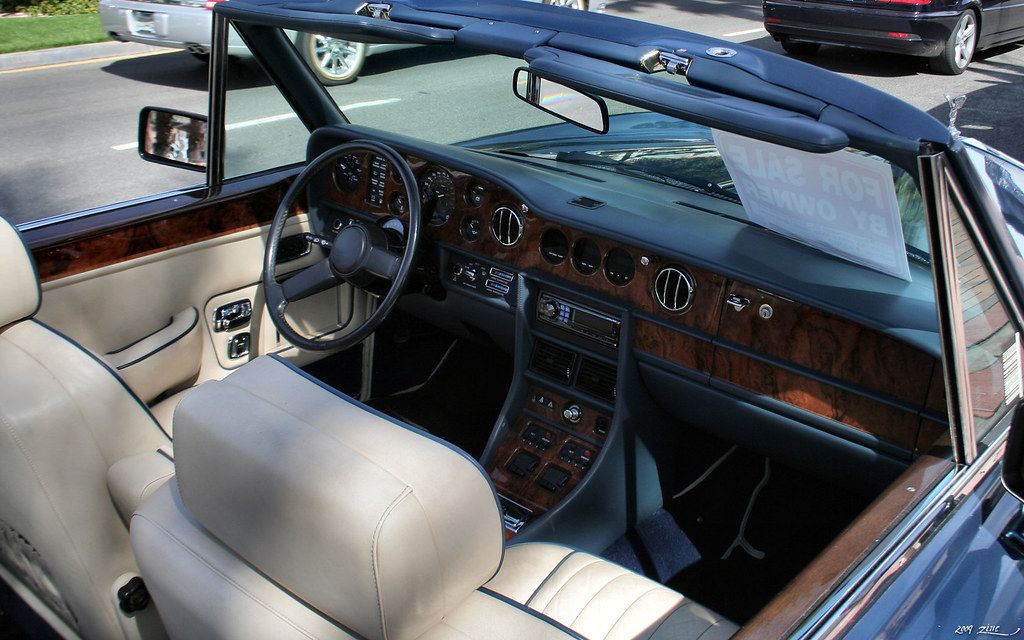
3. **The 1994 Rolls-Royce Corniche: A Symbol of Timeless Elegance**The 1994 Rolls-Royce Corniche from Wayne Newton’s esteemed collection is a vivid embodiment of the enduring elegance and profound luxury that the Rolls-Royce marque represents. This specific model, once under the ownership of “Mr. Las Vegas” himself, serves as a clear reflection of his discerning taste for both opulent aesthetics and superior performance. It stands as a pinnacle of automotive refinement, celebrated for its unparalleled presence on any discerning roadway.
Renowned for its incredibly smooth ride and meticulously handcrafted details, the Corniche effortlessly marries classic design sensibilities with advanced engineering that was, in its time, truly ahead of the curve. Beneath its stately bonnet lies a powerful V8 engine, providing a commanding yet supremely refined driving experience. The interior, adorned with plush leather and rich, polished wood accents, creates an ambiance of unmatched sophistication, positioning Newton’s Rolls-Royce as a true icon of the 1990s luxury automotive world.
Its direct connection to a celebrity of Wayne Newton’s stature imbues the vehicle with an additional layer of allure and historical significance. The Corniche not only symbolizes his storied career and his penchant for grandeur, but it also reflects an era when the pursuit of ultimate luxury and exclusivity defined the automotive landscape. It is a vehicle that commands respect, a timeless testament to a dedication to uncompromising quality.
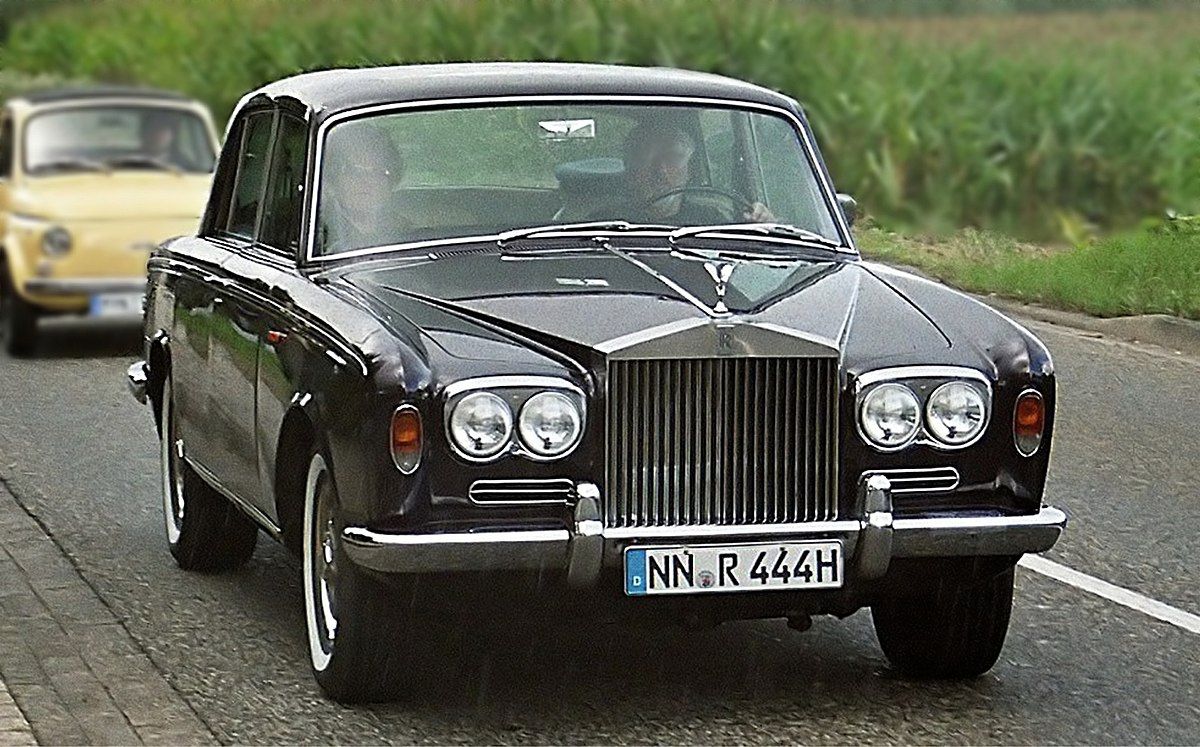
4. **The 1979 Rolls-Royce Silver Shadow II: Classic Opulence Defined**Wayne Newton’s 1979 Rolls-Royce Silver Shadow II is a magnificent classic, embodying an era of profound luxury and undeniable elegance. This vehicle strikingly reflects both the opulent lifestyle of its distinguished owner and the sophisticated automotive production of its time. It is a harmonious blend of refined design and meticulous craftsmanship, presenting an aesthetic that is both commanding and graceful.
This iconic Silver Shadow II is celebrated for its sophisticated design and exceptional craftsmanship, qualities that underscore the heritage of the Rolls-Royce marque. Powering this luxurious automobile is a robust 6.75-liter V8 engine, engineered to provide an incredibly smooth and powerful ride that perfectly complements its sumptuous interior. Inside, occupants are enveloped in plush leather and surrounded by meticulously crafted wood veneer detailing, creating an atmosphere of unparalleled comfort and grandeur.
As a quintessential symbol of prestige, this vehicle offers a unique glimpse into the lavish world that characterizes Wayne Newton’s personal collection and his inimitable lifestyle. Its proud presence within Newton’s garage not only highlights his impeccable taste for fine automobiles but also serves as a enduring testament to his connection with classic, timeless sophistication. This Silver Shadow II is more than a car; it is a rolling statement of an enduring commitment to luxury.
Car Model Information: 2023 GMC Sierra 1500 Denali
Name: Rolls-Royce Silver Shadow
Production: 1965–1980,30,057 produced
Aka: Rolls-Royce Silver Wraith II
Related: Bentley T-series,Rolls-Royce Camargue,Rolls-Royce Corniche
Manufacturer: Rolls-Royce Limited
Layout: Front-engine, rear-wheel-drive layout
Predecessor: Rolls-Royce Silver Cloud
Successor: Rolls-Royce Silver Spirit
Assembly: Crewe, Cheshire,England
BodyStyle: Sedan (automobile),convertible,Sedan (automobile)
Engine: Rolls-Royce–Bentley L-series V8 engine#6.25,Rolls-Royce–Bentley L-series V8 engine#6.75
Transmission: Turbo-Hydramatic#Super Turbine 400 .2F THM400 .2F THM375 .2F 3L80 .2F 3L80HD,Automatic transmission
Length: 203.5 in
Abbr: on (LWB)
Width: 71 in
Height: 59.75 in
Weight: 4648 lb
Wheelbase: 119.5 in
Sp: uk
Caption: 1971 Rolls-Royce Silver Shadow
Class: Full-size luxury car
Categories: 1970s cars, All articles lacking reliable references, All articles with unsourced statements, Articles lacking reliable references from November 2023, Articles with short description
Summary: The Rolls-Royce Silver Shadow and its slightly stretched version, the Rolls-Royce Silver Wraith II, are full-size luxury cars produced by British automaker Rolls-Royce in various forms from 1965 to 1980. It was the first of the marque to use fully slabsided unitary body and chassis construction, as well as all-around independent suspension. Two-door versions were initially, between 1965 and 1971, sold as the Rolls-Royce Silver Shadow 2-door saloon and the Silver Shadow Drophead Coupé, before they became the Rolls-Royce Corniche Coupé and Convertible, respectively.
The Silver Shadow was produced from 1965 to 1976, and the Silver Shadow II from 1977 to 1980. The combined model run was 30,057 cars manufactured; James May reported it in 2014 as the largest production volume of any Rolls-Royce model.
A Bentley-badged version, the T-series, was produced from 1965 through 1980 in 2,336 examples.
Get more information about: Rolls-Royce Silver Shadow
Buying a high-performing used car >>>
Brand: Rolls-Royce Model: Silver Shadow II
Price: $61,999 Mileage: 17,877 mi.
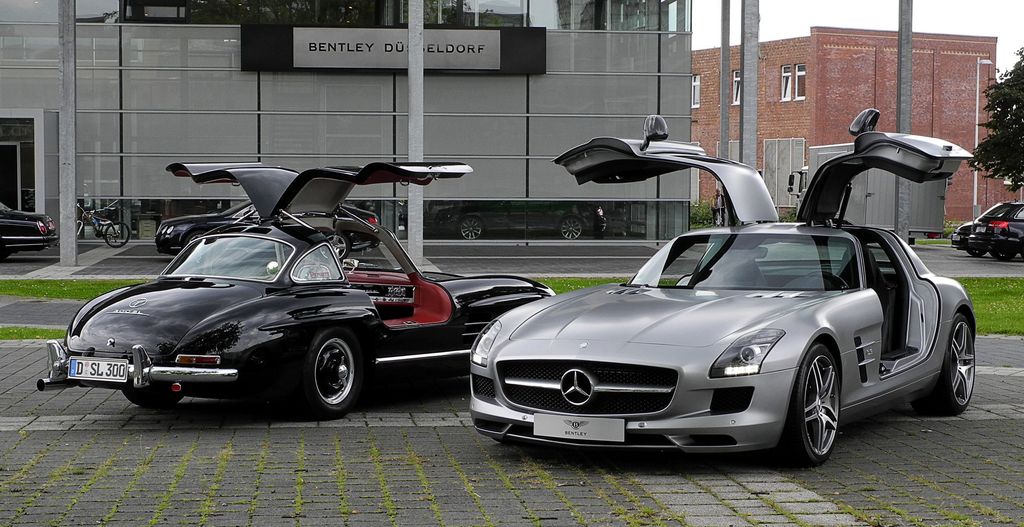
5. **The Rare 2011 Mercedes-Benz SLS AMG Gullwing Coupe**Among the diverse and impressive vehicles in Wayne Newton’s collection stands the striking 2011 Mercedes-Benz SLS AMG Gullwing Coupe. This modern classic, instantly recognizable by its distinctive upward-opening doors, represents a different facet of Newton’s automotive appreciation: a focus on contemporary performance and cutting-edge design while retaining an air of exclusivity. It’s a testament to his understanding that true luxury isn’t confined to any single era but evolves with automotive innovation.
What further elevates the allure of this particular Gullwing Coupe is its storied provenance, having been previously owned by another legendary figure: Roy Horn. This connection adds a compelling layer of celebrity heritage, making the vehicle not just a marvel of engineering but also a piece of entertainment history. The SLS AMG Gullwing, known for its powerful engine and iconic design, embodies a blend of modern dynamism and aspirational luxury, fitting perfectly within a collection curated by a connoisseur like Newton.
This Mercedes-Benz is a prime example of automotive excellence, showcasing how Newton’s collection is not solely anchored in classic luxury but also embraces modern performance icons with significant cultural connections. Its inclusion highlights the thoughtful curation behind his esteemed garage, where each vehicle contributes to a narrative of unparalleled taste and a rich legacy in the limelight.
Car Model Information: 2023 GMC Sierra 1500 Denali
Name: Mercedes-Benz SLS AMG
Manufacturer: Mercedes-AMG
Production: January 2010–2014
ModelYears: 2010–2015
Assembly: Sindelfingen
Designer: Mark Fetherston (2007)
Class: Sports car
BodyStyle: coupe
Layout: Front mid-engine, rear-wheel-drive layout,all-wheel drive
Engine: Mercedes-Benz M156 engine#M159,V8 engine
Transmission: dual-clutch,automatic transmission
Wheelbase: 2680 mm
Abbr: on
Length: 4638 mm
Width: 1939 mm
Height: 1252 mm
Weight: {{convert,1619,kg,lb,0,abbr=on
Predecessor: Mercedes-Benz SLR McLaren
Doors: Gull-wing door
Categories: All articles needing additional references, All articles with bare URLs for citations, Articles needing additional references from November 2018, Articles with bare URLs for citations from August 2022, Articles with hAudio microformats
Summary: The Mercedes-Benz SLS AMG (C197 / R197) is a front mid-engine, 2-seater, limited production sports car developed by the Mercedes-AMG division of German automotive manufacturer Mercedes-Benz, with the assistance of David Coulthard. The car is the successor to the Mercedes-Benz SLR McLaren. SLS stands for “Super Leicht Sport” (Super Light Sport).
The SLS was the first Mercedes-Benz automobile designed and built from scratch entirely by AMG. Upon its introduction at the 2009 Frankfurt Motor Show, the SLS AMG’s 420 kW; 563 hp (571 PS) M159 engine was according to AMG “the world’s most powerful naturally aspirated production series engine” ever produced.
An electric version of the car, the SLS AMG Electric Drive, was presented at the 2012 Paris Motor Show. Production ended in 2014 with the introduction of the SLS AMG GT Final Edition.
As compared to its predecessor (the SLR McLaren), the SLS is per Mercedes-AMG head Tobias Moers, the faster car on the track, both in the hands of normal drivers as well as race car drivers. The Mercedes-McLaren SLR came in at 1,750 kg (3,858 lb). The SLS, however, has a curb weight of 1,619 kg (3,569 lb) when equipped with the standard wheels.
Get more information about: Mercedes-Benz SLS AMG
Buying a high-performing used car >>>
Brand: Mercedes-Benz Model: SLS AMG
Price: $61,999 Mileage: 17,877 mi.
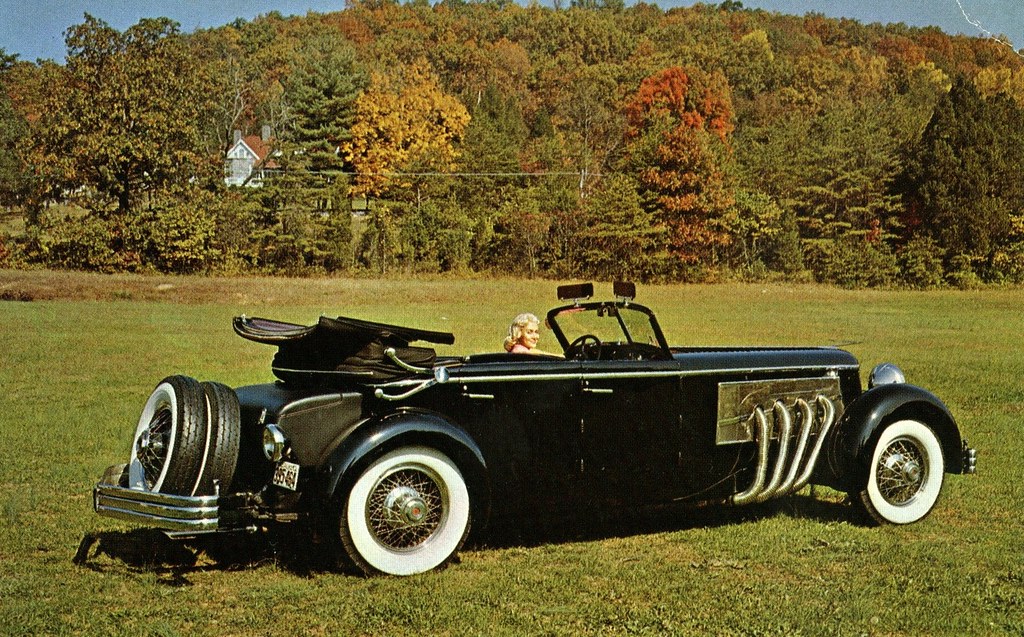
6. **The Intriguing 1929 Duesenberg: Howard Hughes’ Former Ride**A truly legendary piece within Wayne Newton’s extraordinary automotive stable is the 1929 Duesenberg, a vehicle that transcends typical car ownership to become a historical artifact. The Duesenberg name itself evokes an era of unparalleled American luxury and engineering prowess, known for crafting some of the most exclusive and powerful automobiles of their time. This particular example commands attention, not just for its inherent grandeur, but for its captivating past.
Adding an unparalleled layer of intrigue and significance, this Duesenberg once belonged to the enigmatic and influential magnate, Howard Hughes. This connection is particularly fascinating, given that Hughes was a former boss of Newton’s, creating a tangible link between two prominent figures in American history and their shared yet distinct worlds. The car becomes a silent witness to a bygone era of immense wealth and the powerful personalities who shaped it.
Possessing a Duesenberg is, in itself, a mark of ultimate automotive connoisseurship, but one with the provenance of Howard Hughes makes it truly exceptional. This vehicle stands as a cornerstone of historical automotive appreciation within Newton’s garage, embodying not just the pinnacle of pre-war luxury design, but also a remarkable piece of American industrial and cultural heritage. It’s a testament to Newton’s profound understanding of collecting truly irreplaceable items.
Car Model Information: 2023 GMC Sierra 1500 Denali
Name: Duesenberg Automobile & Motors Company, Inc.
Logo: Duesenberg logo.jpg
Fate: Dissolved
Predecessor: Duesenberg Motors Company (1913–1919)
Foundation: Indianapolis
Founders: August Duesenberg,Fred Duesenberg
Defunct: [object Object]
LocationCity: Auburn, Indiana
LocationCountry: U.S.
KeyPeople: August Duesenberg,(co-founder),Fred Duesenberg,(co-founder),Errett Lobban Cord
Industry: Automobile manufacturing,Engine manufacturing
Products: Duesenberg Model A,#Model X (1926–1927),Duesenberg Model J
Parent: Auburn Automobile
Categories: 1910s cars, 1913 establishments in Minnesota, 1920s cars, 1930s cars, 1937 disestablishments in Indiana
Summary: Duesenberg Automobile & Motors Company, Inc. was an American racing and luxury automobile manufacturer founded in Indianapolis, Indiana, by brothers Fred and August Duesenberg in 1920. The company is known for popularizing the straight-eight engine and four-wheel hydraulic brakes. A Duesenberg car was the first American car to win a Grand Prix race, winning the 1921 French Grand Prix. Duesenbergs won the Indianapolis 500 in 1922 (when eight of the top ten finishers were Duesenbergs), 1924, 1925 and 1927. Transportation executive Errett Lobban Cord acquired the Duesenberg corporation in 1926. The company was sold and dissolved in 1937. It was the only automotive company to go bankrupt in the Great Depression and not be rescued by the US Government of the time, largely a political move due to New Deal policies avoiding imagery of helping the richest, despite Duesenberg being the largest employer in Indianapolis at the time.
Get more information about: Duesenberg
Buying a high-performing used car >>>
Brand: Duesenberg Model: 1929 Duesenberg
Price: $61,999 Mileage: 17,877 mi.
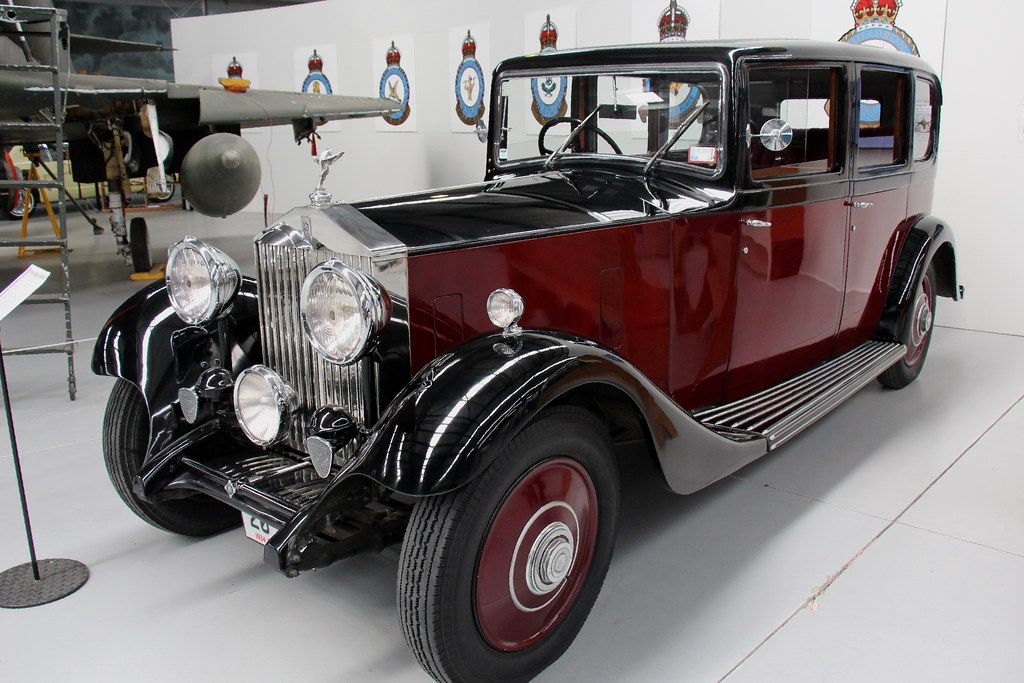
7. **The Broader Car Collection: Rolls-Royces, Bentleys, and Unique Finds**While specific iconic vehicles stand out, Wayne Newton’s car collection, as a whole, presents a curated spectacle of automotive excellence, reportedly comprising 13 rare automobiles. This comprehensive assembly primarily features models from the prestigious marques of Rolls-Royce and Bentley, demonstrating Newton’s consistent preference for the highest echelons of luxury and handcrafted automotive artistry. It’s a collection built on discerning taste, not just on quantity.
Further enhancing the collection’s unique allure is the presence of vehicles once owned by other legendary entertainers, including Johnny Carson and Liberace. This rich tapestry of celebrity provenance elevates the collection beyond mere mechanical marvels, transforming them into pieces of cultural history. Each car carries whispers of the extraordinary personalities who once cherished them, adding a compelling narrative to their intrinsic value and exquisite design.
Beyond the established luxury brands and celebrity connections, the collection also boasts truly one-of-a-kind vehicles. These include a remarkable 1934 Rolls-Royce and a distinctive 1983 Mercedes-Benz, highlighting Newton’s pursuit of exclusivity and rarity. Such unique finds underscore the depth of his passion for automobiles that are not just luxurious, but also possess an irreplaceable individuality, making his garage a truly exceptional repository of automotive treasures.
Beyond the gleaming chrome and polished wood of his extraordinary automotive fleet, Wayne Newton’s most ambitious project, his beloved Casa de Shenandoah, stands as a monument to his personal legacy and an enduring symbol of Las Vegas grandeur. This sprawling estate, far from being just a private sanctuary, embarked on a remarkable journey to become a public attraction, inviting enthusiasts to step into the world of “Mr. Las Vegas” himself. Yet, this transformation was not without its intricate challenges, weaving a narrative of vision, opposition, and complex legal battles that further define its unique history.
This next chapter delves into the captivating evolution of Casa de Shenandoah, from its humble beginnings as a private ranch to its ambitious, albeit tumultuous, stint as a public museum. We’ll explore the intricate legal sagas that shaped its destiny, touch upon the full breadth of the prized automotive collection that graced its public tours, and ultimately trace the estate’s most recent developments, offering a comprehensive look at a property as storied as its legendary owner.
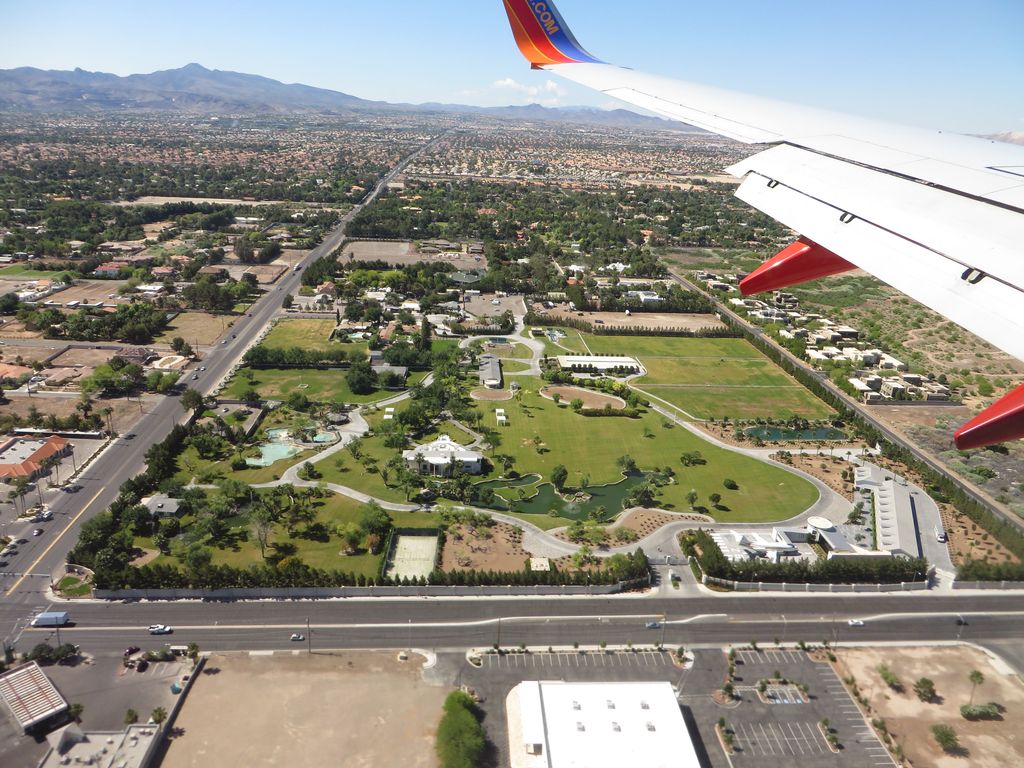
8. **The Genesis of Casa de Shenandoah: From Private Estate to Public Dream**The story of Casa de Shenandoah begins modestly in 1966, when Wayne Newton acquired five vacant acres of land in Paradise, Nevada. Over the ensuing years, this initial parcel steadily expanded, eventually encompassing a magnificent 39.5-acre estate that became the heart of Newton’s private world. From its earliest days, the property was designed not just as a residence, but as a thriving ranch, complete with a stable and riding corral, providing a haven for his beloved horses and a pack of dogs.
As the years unfolded, Casa de Shenandoah blossomed, reflecting Newton’s growing success and his penchant for refined living. By 1970, the ranch boasted an Arabian horse-breeding stable, a passion that would later see his horses moved to a separate facility elsewhere in Nevada. By 1973, the estate already comprised three distinct houses and even a dedicated horse hospital, underscoring the depth of his commitment to his animal kingdom, which by 1976 included a staggering 120 Arabian horses.
A significant milestone arrived in 1978 with the near completion of a magnificent $4 million Southern-style mansion, personally designed by Newton, though he firmly denied it was a replica of Tara from *Gone with the Wind*. This grand residence, alongside a heliport and a dozen automobiles housed in various garages across the estate, including his renowned Rolls-Royces and Howard Hughes’ 1929 Duesenberg, became the epitome of his luxurious lifestyle. With artersian wells and pristine lakes complementing the landscape, and a menagerie of deer, dogs, ducks, swans, wallabies, and peacocks freely roaming by 1979, Casa de Shenandoah was truly a self-contained paradise, recognized by CBS News and MTV Cribs as one of the nation’s most opulent homes.
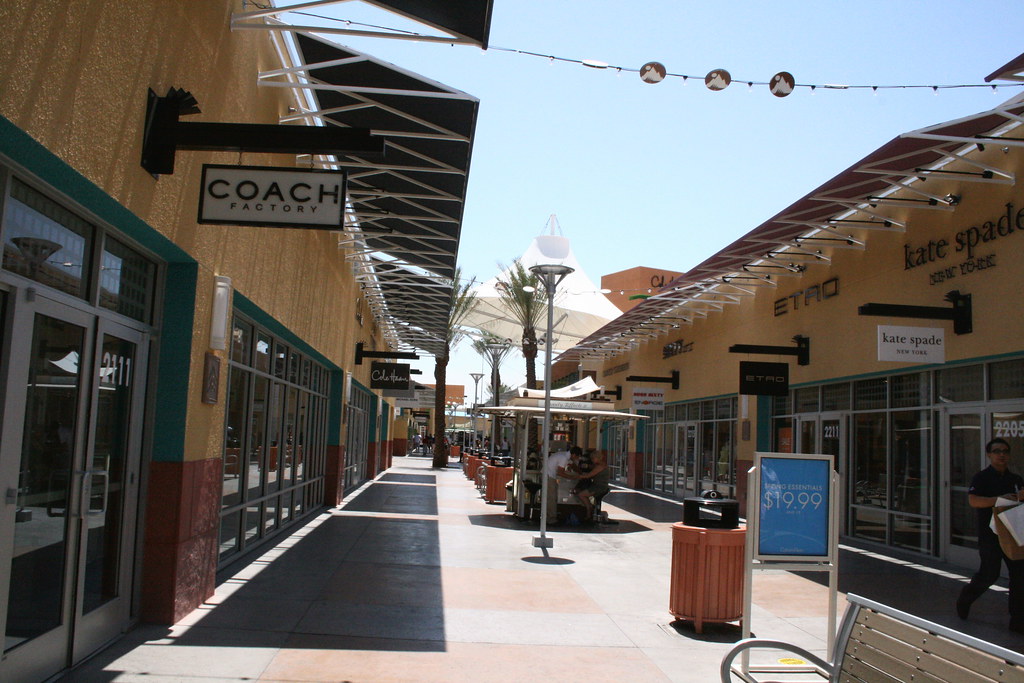
9. **Vision for a Vegas Attraction: Opening Casa de Shenandoah to the Public**In a bold move that promised to unveil a unique facet of Las Vegas’s allure, Wayne Newton proposed in 2010 to transform Casa de Shenandoah into a public attraction. His motivation was clear: “a lot of people have written and want to see what the property looks like, and my wife said that if you have something so special, it should be shared.” This grand vision attracted CSD LLC, a company majority-owned by Texas residents Lacy and Dorothy Harber, who partnered with the Newtons (holding a 20% stake) to acquire the estate for $18.7 million, alongside an additional ten acres across the street for $10 million.
The ambitious plans for the attraction were designed to offer an immersive experience into Newton’s world. Proposed tours would guide visitors through his famed garage of automobiles, provide a glimpse of his private Fokker jet, and showcase his exotic zoo animals, which included African penguins, peacocks, and over 70 Arabian horses. Beyond the tours, the project envisioned a dinner theater, a comprehensive museum (a larger rendition of Newton’s “Red Room”), and a gift shop on the newly acquired ten acres. The museum was conceived as a “hall of fame” for legendary Las Vegas entertainers, including Frank Sinatra, Dean Martin, and Sammy Davis Jr., while a 600-seat theater, mirroring the Sands Hotel and Casino’s Copa Room, would feature Newton as the primary headliner.
However, this ambitious undertaking faced immediate and formidable opposition from nearby residents. A neighborhood meeting in September 2010 revealed unanimous disapproval, primarily fueled by concerns over increased traffic disrupting their rural preservation area. Despite the Paradise Town Advisory Board’s recommendation against the project, the Clark County Commission ultimately approved the plan in November 2010. To mitigate concerns, the public entrance was rerouted to Sunset Road, and plans for a wedding pavilion were entirely abandoned, though Newton continued to host private weddings at the estate. While initially slated for a February 2011 opening, the project’s commencement was slow, pushing the expected public debut to early 2012.

10. **Legal Labyrinths: The Dispute with CSD LLC**The grand aspirations for Casa de Shenandoah as a public attraction were abruptly halted in May 2012, as CSD LLC filed a comprehensive lawsuit against Wayne Newton. The core of their allegations revolved around claims that Newton and his family had actively interfered with the development plans, specifically asserting their refusal to vacate the iconic mansion or permit the construction of their new private residence on the property. Furthermore, CSD claimed Newton had withheld cooperation in cataloging and transferring personal property and invaluable memorabilia destined for the museum.
The lawsuit painted a picture of widespread obstruction, detailing how Newton allegedly refused to remove his 55 horses from the property, despite CSD’s assertion that fewer than 20 were needed for the new project. Disturbingly, there were also allegations of sexual harassment against a young woman hired by CSD to care for and train the horses, alongside claims that Newton’s various large dogs, freely roaming the estate, had bitten multiple individuals, and he had refused their removal to facilitate the museum’s opening. In this arrangement, CSD served as the landlord, with the Newtons paying a symbolic lease fee of $1 per month until their new home, for which CSD agreed to pay $2 million, was completed.
Newton’s attorney vehemently denied these allegations, countering that CSD was solely responsible for the delays and failures in constructing the museum and the new residence. The Newtons, in turn, filed a countersuit, asserting that Steve Kennedy, a partner in CSD, had entered their home without permission and that they had been locked out of their horse barn. They also claimed a computer containing their business files had been seized from Newton’s home office. A temporary restraining order was subsequently issued against Kennedy, prohibiting him from approaching the family or the estate. Newton expressed deep regret over entering the deal, suggesting the project could only proceed with new investors.
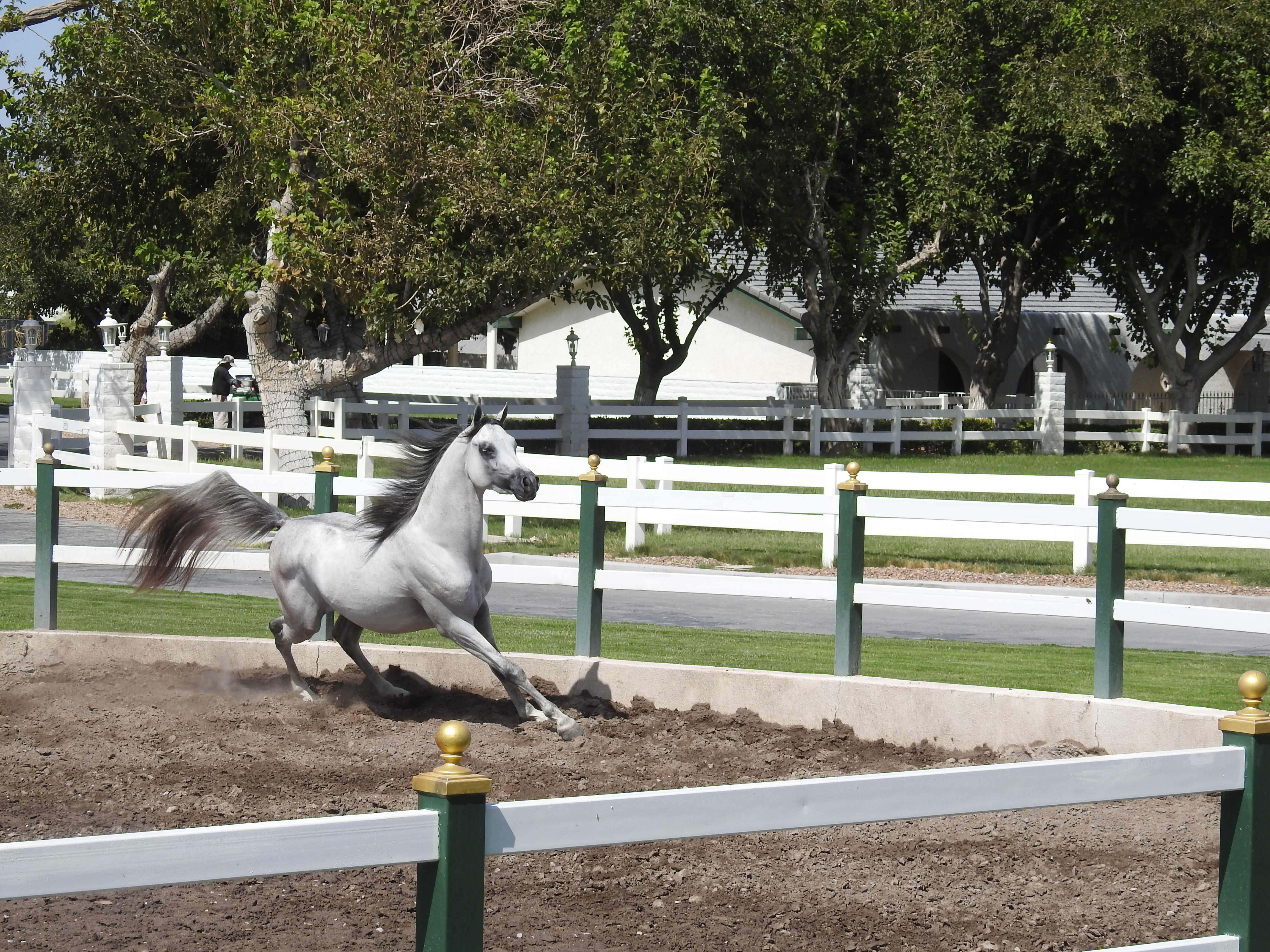
11. **The Battle for the Beasts: Horses and Hounds at the Heart of the Dispute**Amidst the escalating legal complexities, the fate of Wayne Newton’s beloved horses became a central point of contention. In June 2012, a county judge denied CSD’s motion to relocate some of the estate’s horses, forcing the company to continue shouldering the substantial costs of their care. CSD asserted it had already spent approximately $888,000 on feeding and maintaining the herd, which numbered 51 Arabian horses residing on just about 15 acres of grazing land, far exceeding their estimated need of 10 to 15. The monthly costs, soaring to $37,000, proved unsustainable for CSD, which by then had already invested an astounding $50 million into the project.
The financial strain intensified in July 2012, when CSD sought a $1 million loan specifically to cover the ongoing expenses of the Arabian horse herd. The Newtons, however, argued that CSD possessed sufficient funds without recourse to a loan, raising concerns that the loan’s terms were structured to allow a limited liability company to foreclose on the property if repayment wasn’t met within 30 days. Later that month, CSD further alleged that the Newton family had been experiencing financial difficulties when they sold the property, implying they had no genuine intention of cooperating with the attraction plans. The dispute grew increasingly acrimonious, with both the Newtons and Kennedy exchanging accusations of posing threats to one another.
By August 2012, CSD sought court approval to dissolve the management company tasked with creating the attraction, a move that would grant them complete ownership of the property. The approval of this request was deferred until December 2012, allowing the Newtons time to gather facts for their defense. While CSD pursued a patent for a “Welcome to the Fabulous Las Vegas Museum” sign, the Newtons insisted that the museum retain its original focus on Wayne Newton’s illustrious career. However, the trajectory of the project took a decisive turn in October 2012 when CSD LLC was placed into Chapter 11 bankruptcy. This development led to the abandonment of their attraction plans, and in December 2012, a bankruptcy court judge approved the sale of the ranch and 13 acres across the street, valued at $50.8 million.

12. **The Grand Opening and Unexpected Challenges**Despite the turbulent legal history, the vision of Casa de Shenandoah as a public attraction was dramatically revived. The Harbers embarked on extensive renovations, investing up to $20 million over several months to transform the property with new flooring, bathrooms, hardware, stair railings, landscaping, and wallpaper. In September 2013, the rejuvenated estate was listed for sale at $70 million, positioning it as one of the most expensive homes in the Las Vegas Valley. After a brief renaming to Sunset Springs Ranch in December 2013 and plans for a wedding chapel in July 2014, the estate was again put up for sale in September 2014 for $30 million, with prospects of being converted into a housing subdivision, sparking a petition signed by nearly 1,000 people to have the ranch designated a historical site.
Fortunately for fans and preservationists, a turning point arrived later in September 2014 when Lacy Harber proposed that the Newtons reclaim the property, an offer they readily accepted. This pivotal agreement effectively halted the housing subdivision plans, with Newton emphasizing, “This really is a piece of Las Vegas history. It would be a shame for it to be turned into something else.” By December 2014, the iconic “Casa de Shenandoah” name was restored, and the Newtons eagerly recommitted to reviving the attraction project, with long-term plans to eventually reside on the property once more. The Harbers, demonstrating their renewed dedication, invested over $100 million into renovating Casa de Shenandoah into a full-fledged museum.
The culmination of these efforts arrived with a VIP party on September 17, 2015, preceding the grand public opening the following day. Newton, visibly moved, remarked, “Nobody thought we’d be back here. When we moved out, I never thought I’d be back here, either.” Although the Newtons continued living at their newer house, Wayne Newton personally visited the ranch daily, and within five days of its opening, approximately 400 people were visiting the ranch daily. The newly built Visitor Center across the street housed Newton’s memorabilia, shops (Wayne’s World, Kat’s Korner, Lauren’s Lair), and a short documentary film narrated by Newton. The immersive tour featured his extensive collection of 13 rare automobiles—predominantly Rolls-Royces and Bentleys, including vehicles once owned by Johnny Carson and Liberace, and unique models like a 1934 Rolls-Royce and a 1983 Mercedes-Benz. Also on display were his Native American artifact collection, private jet, armed forces items, and letters from U.S. presidents, alongside his captivating zoo animals, all set against the backdrop of 1,000,000 square feet of meticulously maintained grass.
Read more about: Mind-Blown! Things Only Adults Truly Notice When Rewatching Your Favorite Disney Princess Movies
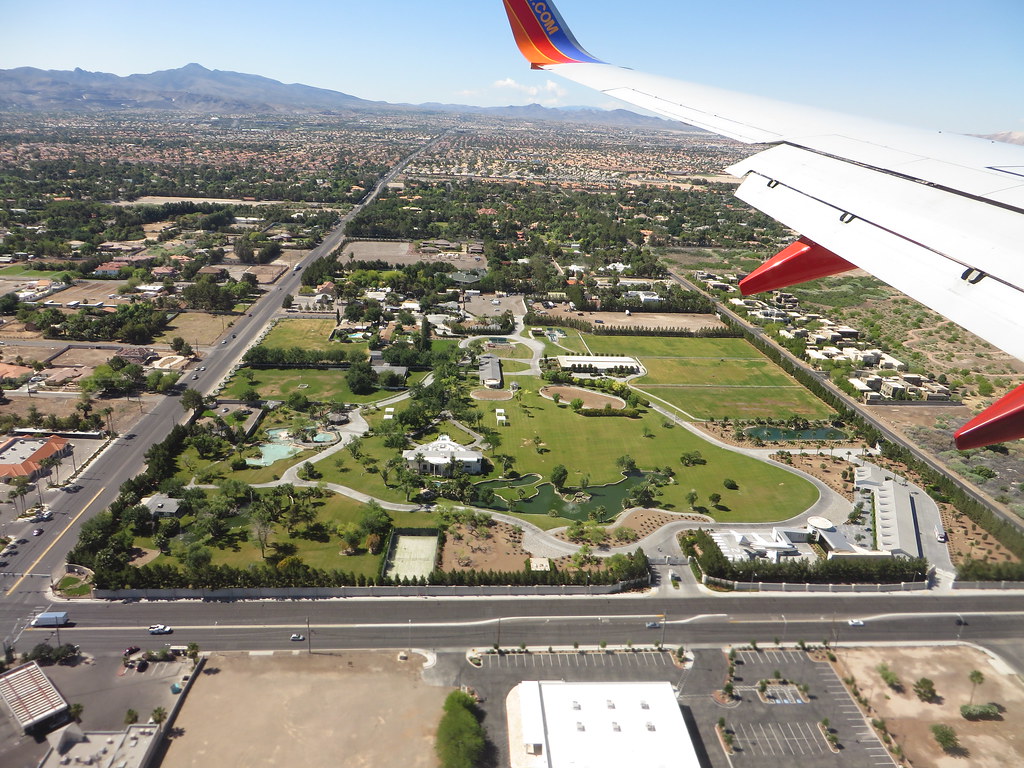
13. **Recent Chapters: Closure, Sale, and Lingering Legacies**Despite its grand reopening, Casa de Shenandoah’s operation as a public attraction faced persistent challenges, particularly concerning strict county guidelines. CSD LLC was permitted to host events on the ranch under prohibitions against outdoor loudspeakers, alcohol sales, after-dark activities, and charging for events. However, these rules were frequently disregarded, leading to numerous complaints from neighbors regarding loud music and traffic congestion. County Commissioner Jim Gibson noted that CSD was “doing things well beyond what they were authorized to do,” highlighted by incidents like a November 2017 banquet hosted by the Nevada District Office of the Small Business Administration, which included an unauthorized cash bar and violated noise and time restrictions, prompting investigations.
Despite its grand reopening, Casa de Shenandoah’s operation as a public attraction faced persistent challenges, particularly concerning strict county guidelines. CSD LLC was permitted to host events on the ranch under prohibitions against outdoor loudspeakers, alcohol sales, after-dark activities, and charging for events. However, these rules were frequently disregarded, leading to numerous complaints from neighbors regarding loud music and traffic congestion. County Commissioner Jim Gibson noted that CSD was “doing things well beyond what they were authorized to do,” highlighted by incidents like a November 2017 banquet hosted by the Nevada District Office of the Small Business Administration, which included an unauthorized cash bar and violated noise and time restrictions, prompting investigations.
Further controversial events included a $10,000 wedding and a car show, culminating in an April 2018 dining and dancing event that attracted over 1,200 people with live music until late evening. Casa de Shenandoah officially closed to the public for renovations on April 24, 2018, with Newton stating it would reopen as soon as possible. However, on July 10, 2018, the Newtons withdrew the permits for the property’s museum and tour operations. Wayne Newton explained, “As of now, we are just taking a breather and deciding what we want to do in the future. We have not wanted to make any rush decisions.” The animals housed on the property were subsequently required to be relocated by mid-September 2018.
In July 2019, Casa de Shenandoah was sold to Smoketree LLC for $5.56 million, despite Newton having offered to buy back the estate for $6 million, an outcome that disappointed him. This led to legal action in August 2019, as Newton sought to retrieve personal property—including antiques, art, and various personal items—which Smoketree believed were part of the purchase. The visitor center and its 10-acre site were sold separately in September 2019. By February 2020, Newton won a preliminary battle to reacquire his belongings, and the “Casa de Shenandoah” name was removed from the estate, as Newton retained ownership of the name. Adding another layer to the estate’s complex narrative, two lawsuits were filed in August 2019 and April 2020, respectively, by women claiming to have been bitten by Newton’s pet capuchin monkey during tours in 2017 and 2018, although Newton’s wife stated the family was not directly involved in operations at the time. As of August 2020, Smoketree had put the estate back on the market for $29.9 million, continuing its storied, multifaceted journey through Las Vegas history.
Wayne Newton’s Casa de Shenandoah, much like the man himself, is an enduring testament to the glamour and intricate narratives woven into the fabric of Las Vegas. From a private oasis to a public attraction, then through the crucible of legal battles and changes in ownership, the estate has mirrored the dynamic life of its iconic founder. It remains a fascinating blend of luxury, history, and spectacle, continually evolving and offering a captivating glimpse into the opulent world of “Mr. Las Vegas.” The story of Casa de Shenandoah, much like a timeless classic automobile, continues to accelerate into new chapters, each one adding to the profound legacy of an entertainment legend.

